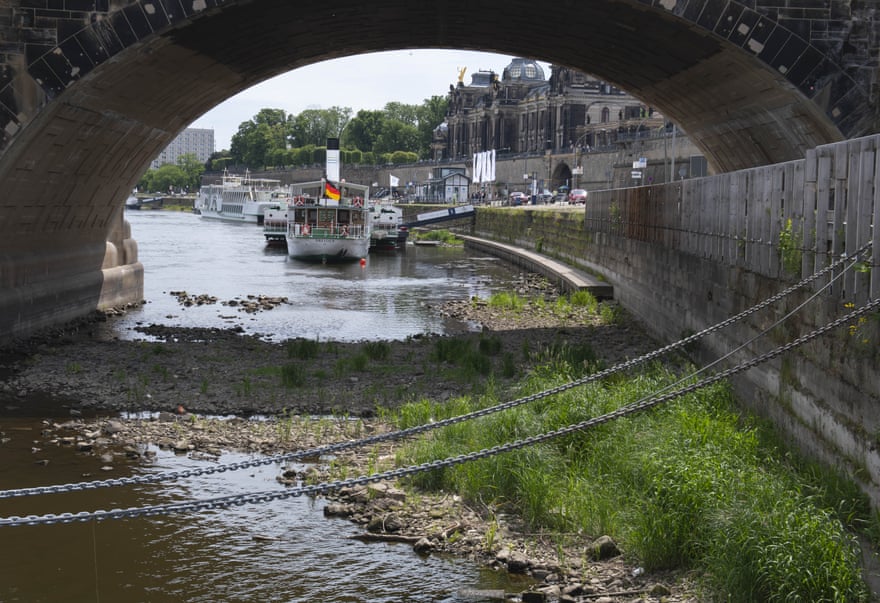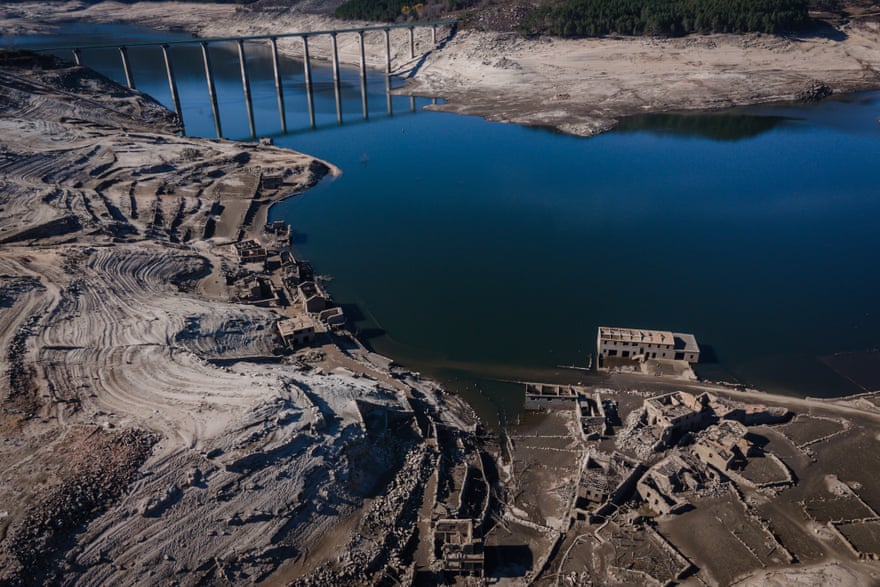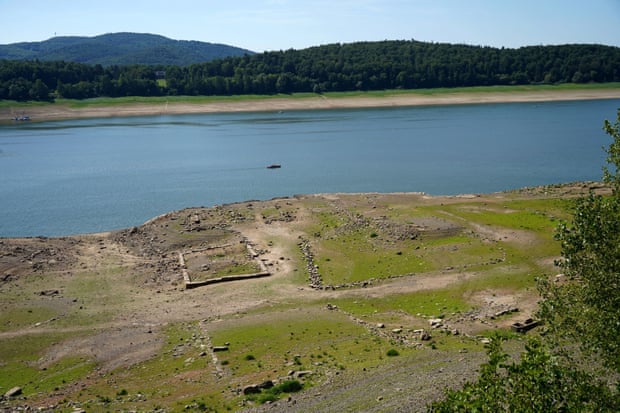The warning could not be starker. Wenn du mich siehst, dann weine (“If you see me, then weep”), reads the grim inscription on a rock in the Elbe River near the northern Czech town of Děčín, close to the German border.
As Europe’s rivers run dry in a devastating drought that scientists say could prove the worst in 500 years, their receding waters are revealing long-hidden artifacts, from Roman camps to ghost villages and second world war shipwrecks.
The so-called “hunger stone” at Děčín is one of dozens in central European rivers engraved to mark their levels during historic droughts – and warn future generations of the famine and hardship likely to follow each time they became visible.
Czech researchers in 2013 described the stone as “chiselled with the years of hardship and the initials of authors lost to history”, saying it “expressed that drought had brought a bad harvest, lack of food, high prices and hunger for poor people.”
The earliest readable year on the Děčín stone is 1616. Traces of inscriptions relating to much earlier droughts, including 1417 and 1473, have been largely eroded over time. Ten later dry years, between 1707 and 1893, are also recorded.
Stern reminders of drought’s grim consequences, most hunger stones are found on the Elbe, which flows from the north of what is now the Czech Republic through former Bohemia and then Germany before reaching the North Sea near Hamburg. Others appear on the Rhine, Danube and Moselle.

One, near Bleckede in Germany, reads: “When this goes under, life will become more colorful again”. The Elbe stones in particular have appeared more regularly – notably during the central European drought of 2018 – since a dam was built in the 1920s.
But they are far from the only archaeological artifacts to have seen the light of day once more in this year’s drought.
Italy’s longest river, the patched Po, whose water level is at a 70-year low, has yielded the remains of an ancient hamlet in Piedmont. More recent relics to emerge from the river include the wreck of the Zibello, a 50-metre cargo barge sunk during the second world war, a Nazi military vehicle and, near Mantua, a 450kg (1,000lb) bomb, whose discovery and detonation required the evacuation of more than 3,000 people from their homes.
In Lombardy, timber building foundations dating back to the bronze age have risen from the bed of the River Oglio, while the 100,000-year-old skull of a deer and the remains of hyenas, lions and rhinos have appeared on dried-out parts of Lake Como.

In Rome, the receding Tiber has revealed the ruins of a bridge believed to have been built during the first century for the emperor Nero so he could more easily visit his possessions on the right bank of the river, including the villa of his mother, Agrippina.
In Serbia, the mighty Danube has fallen to its lowest level in almost a century, exposing the wrecks of more than 20 explosives-filled German warships scuttled during the second world war near Prahovo, some still with turrets and bridges intact, others mostly hidden under sand banks.
In Spain, long-submerged villages have become unlikely tourist attractions. Aceredo, a small town near the border with Portugal, was flooded by the River Lima in 1992 to make room for the Alto Lindoso reservoir, but has resurfaced this spring.

The evaporating As Conchas reservoir has also exposed Aquis Querquennis, a Roman fort built between AD69 and 79 but abandoned in about AD120. The site vanished beneath the water in 1949 but its full 2.4 hectares (5.9 acres) are now revealed.
Also in Galicia, the falling waters of the Belesar reservoir, built in 1963 and currently at 39% capacity, have exposed the submerged village of old Portomarín, allowing visitors to stroll around their houses. In Estremadura, a 15th-century bridge below the surface of the Cijara reservoir has emerged, as has the whole of the 11th-century Sant Romà de Sau church in Catalonia.
A long way farther north, the remains of Berich, an entire submerged village near Waldeck in Germany that has been 12 meters underwater since 1913 and is usually referred to by divers as Edersee-Atlantis, can now be visited on foot.

In Switzerland, melting glaciers have revealed more grayly secrets, including two sets of unidentified human remains on an old path crossing the Chessjen glacier in the southern canton of Valais. And in Norway, retreating ice has exposed an iron age woolen tunic, a Roman-style sandal, and an arrow estimated to be 1,300 years old.
www.theguardian.com
George is Digismak’s reported cum editor with 13 years of experience in Journalism